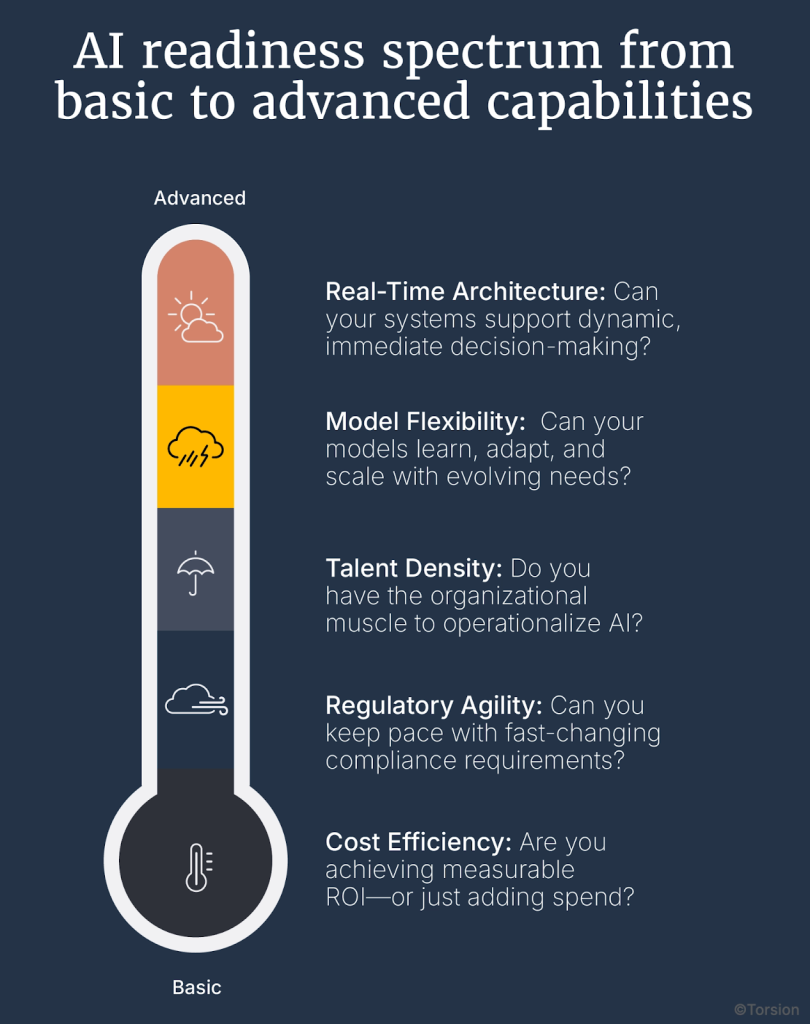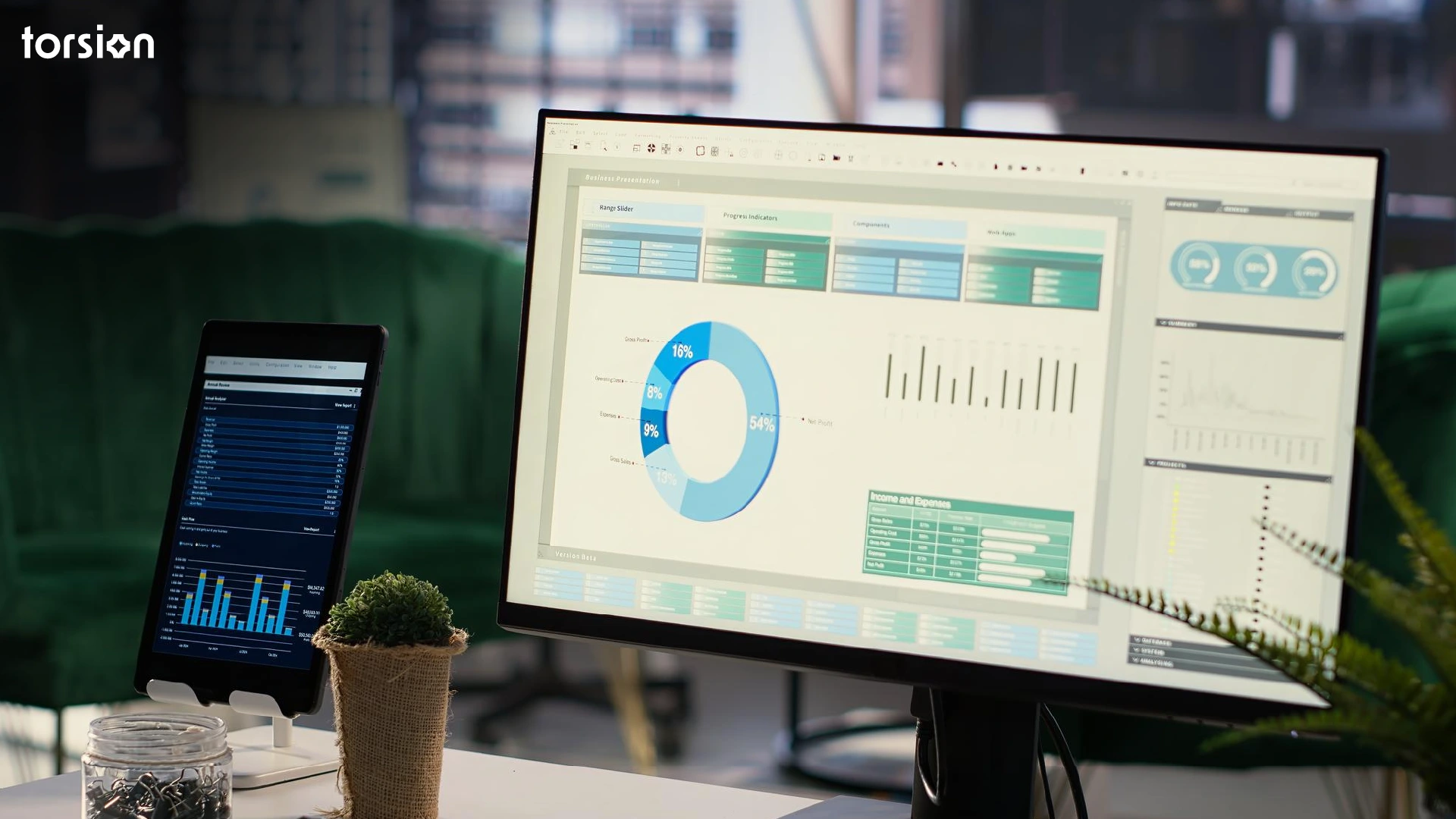In the past six months, I’ve been in more than a dozen boardrooms, mostly as the person they call when Enterprise AI investments stall. One conversation still sticks with me.
A board member looked across the table and asked, “After all this spending, what exactly changed?”
It’s the question no one wants to hear, but every CEO needs to answer.
Despite millions invested in Enterprise AI across industries, 73% of payer organizations are still in pilot mode. No real-time architecture. No scaled deployment.
Just perpetual experimentation.
I don’t blame the teams. The fog is real—made of hype, talent gaps, legacy systems, and a flood of one-size-fits-all solutions. What leaders need is more clarity.
In this piece, I’ll share a framework we use at Torsion to help leaders benchmark where they are, spot real signals, and chart a path from AI noise to measurable value. Think of it as your GenAI weather report.
It’s how we make sense of GenAI readiness across five critical dimensions. So, if you’re navigating this terrain, consider this your forecast.
The GenAI Weather Map: Your AI Strategy Compass
We built the GenAI Weather Map—a simple, visual framework to cut through complexity, after I spoke to multiple leaders who all felt the same pressure.
The pressure to move faster with GenAI, yet the constant uncertainty about what’s actually working. Keeping that in mind, we’ve modeled our report/guide like a meteorological system, because honestly, GenAI adoption feels a lot like managing unpredictable weather.
Some days bring breakthroughs. Others, delays. But when you know the forecast, you make better decisions. And that’s exactly what this map helps you do.

The framework benchmarks your organization across five core dimensions:
- Real-Time Architecture: Can your systems support dynamic, immediate decision-making?
- Model Flexibility: Can your models learn, adapt, and scale with evolving needs?
- Regulatory Agility: Can you keep pace with fast-changing compliance requirements?
- Cost Efficiency: Are you achieving measurable ROI—or just adding spend?
- Talent Density: Do you have the organizational muscle to operationalize AI?
Each dimension is mapped on a scale—from Dense Fog (Experimental) to Clear Skies (Enterprise-Ready). The key here is to help you understand where you are, where the industry is headed, and how to move forward with intention.
Because the GenAI market, like the weather, doesn’t wait.
When Strategy Meets Reality: The Hidden Headwinds
Understanding the forecast is one thing. Flying through it is another.
This is where most organizations stall because they underestimate the turbulence that comes with execution. It’s a fact that GenAI changes how your business has to operate.
The Speed of Enterprise AI Decisions
The speed of Enterprise AI decisions compresses traditional planning cycles. What once took quarters now takes hours. That pace also pressures your systems and your teams. This is where leadership has to shift from project management to climate management: anticipating risk, sensing disruption early, and enabling faster, flatter decisions.
Hidden Enterprise AI Tax
There’s also the Hidden Enterprise AI Tax. Not the price tag on your model, but everything it takes to keep it running. Inference costs. Retraining loops. Compliance scaffolding. These are the power bills of Enterprise AI, and they scale faster than most budgets.
Enterprise AI and Talent
Then there’s talent. Your top performers want leverage, not tools, as they expect their ideas to flow directly into impact, without getting bottlenecked by outdated processes. If they can’t see momentum, they’ll find it elsewhere.
And while this is happening, the middle office—the human buffer between departments and systems—is eroding. As Enterprise AI automates tasks, it also flattens hierarchies, so the only roles that survive will be the ones that add judgment, creativity, and speed.
The bottom line is that this is an organizational fog. For you to lead through you’ll have to rethink structure, culture, and execution.
From Fog to Focus: A Strategic Decision Framework
If you’re feeling overwhelmed by the scale of Enterprise AI change, you’re not alone. The key is to break the problem down.
That’s where a strategic framework helps to stay ready for any disruption.
Start with Risk and Disruption Mapping. Most leaders are watching the known threats—competitive launches, regulatory changes, shifts in infrastructure. But the real risks often show up from the side: a new player unlocking real-time triage, or a compliance framework shifting overnight.
Your strategy has to account for both the visible storms and the pop-up ones.
Next comes Organizational Readiness. Not the tech. The culture, the governance, the decision-making muscle. Do your teams know how to spot an Enterprise AI opportunity? Are your incentives aligned with speed and learning? Is compliance built in or tacked on?
At Torsion, we use The Weather Map to evaluate your maturity across five interconnected dimensions, but in talent, governance, and execution. That’s how you pinpoint where friction really lies. Is it data availability? Process silos? A skills mismatch?
The map reveals it fast and this kind of mapping is critical. It reveals not only where you stand but what’s holding you there.
For example, many payers show early promise in model flexibility, but hit walls on regulatory agility or talent density. Knowing that lets you target the right shifts, whether it’s investing in compliance frameworks or accelerating upskilling efforts.
The value of this approach? It helps you break down a complex transformation into phase-based milestones. You’ll see where you can act quickly, like isolating specific cost-efficiency opportunities, and where long-term investment is needed, such as real-time architecture.
You don’t need to guess your way through the GenAI storm. You can chart a path with data, with structure, and with intent.
Ready to Clear the Fog?
If your organization is serious about moving from GenAI ambition to enterprise-grade execution, start by checking the weather.
The GenAI Weather Map is your strategic lens. It helps you benchmark, prioritize, and act.
At Torsion, we partner with payers to turn them into flight plans. From identifying where you’re stuck to designing the roadmap forward, we’re in it with you.
Take 20 minutes to review the map. Then let’s talk about your climate. The fog is real, but so is the path to clear skies.





